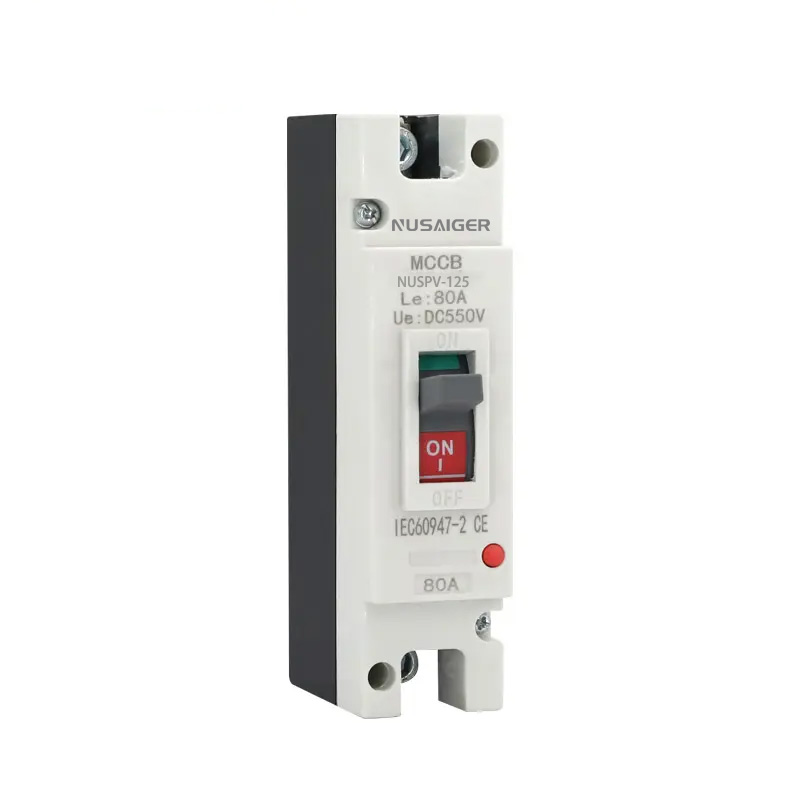Understanding the Safety Standards and Certifications for DC Molded Case Circuit Breakers
1. Introduction to DC MCCB Safety and Compliance
The safety and reliability of DC molded case circuit breakers are governed by a range of international standards. These standards ensure the devices operate safely under specified electrical, mechanical, and environmental conditions. Compliance with these standards is mandatory in many jurisdictions to ensure product reliability and personnel protection.
2. Overview of IEC 60947-2
IEC 60947-2 is a key international standard specifying requirements for low-voltage circuit breakers, including DC MCCBs. It covers construction, performance, testing procedures, and marking. The standard defines endurance tests, dielectric strength, temperature rise limits, and breaking capacity requirements for DC breakers.
3. UL 489 and DC Breaker Certifications
UL 489 certification in North America includes specific provisions for DC breakers. UL’s rigorous testing regime covers interrupting capacity, insulation, and temperature rise tests, plus arc flash containment. Many manufacturers submit DC MCCBs to UL for listing to ensure market acceptance.
4. Other Regional Standards and Regulations
Countries like China use GB14048, Japan applies JIS standards, and Europe adheres to IEC harmonized standards. Local electrical codes often incorporate these standards or add further safety requirements, such as arc flash mitigation or environmental testing under specific conditions.
5. Key Certification Tests Explained
- Dielectric Withstand Test: Verifies insulation strength under overvoltage conditions.
- Temperature Rise Test: Ensures breaker does not exceed temperature limits under rated current.
- Breaking Capacity Test: Confirms ability to safely interrupt fault currents at specified kA ratings.
- Mechanical Endurance Test: Verifies breaker durability over repeated operation cycles.
- Arc Fault Test: Assesses effectiveness of arc extinguishing mechanisms under DC conditions.
6. Importance of Certification for Installers and End-Users
Certified breakers provide confidence in safe operation, reduce liability, and ensure insurance coverage. Installers should verify product certificates, check marking on devices, and maintain documentation. End-users benefit from reliable system protection and regulatory compliance.
7. How to Verify Certifications and Traceability
Manufacturers provide certificates and test reports. Certifications may be verified on recognized databases like UL’s Online Certifications Directory or IEC’s CB Scheme. Serial numbers and manufacturing dates aid in traceability for warranty and recall management.
8. Impact of Standards on Breaker Design and Innovation
Compliance drives innovation in materials, arc chute design, and trip unit electronics. Advanced breakers now include features like communication interfaces, adjustable trip curves, and integrated sensors—all developed under standard constraints to enhance safety and performance.
9. Case Study: Certification Challenges in Solar Projects
In a 100 MW solar farm in Europe, a lack of UL-certified breakers initially delayed project commissioning. Switching to IEC 60947-2 certified breakers solved the compliance bottleneck, enabling grid connection without further delay.
10. Future Trends in DC MCCB Certification
Emerging standards focus on smart breakers, arc flash reduction, and compatibility with renewable energy grid codes. Regulatory bodies are increasingly mandating advanced diagnostics and remote monitoring capabilities to improve system safety.
11. Conclusion
Understanding and adhering to safety standards and certifications is essential for selecting reliable DC molded case circuit breakers. Proper certification ensures safety, operational integrity, and regulatory compliance in solar and energy storage applications.



